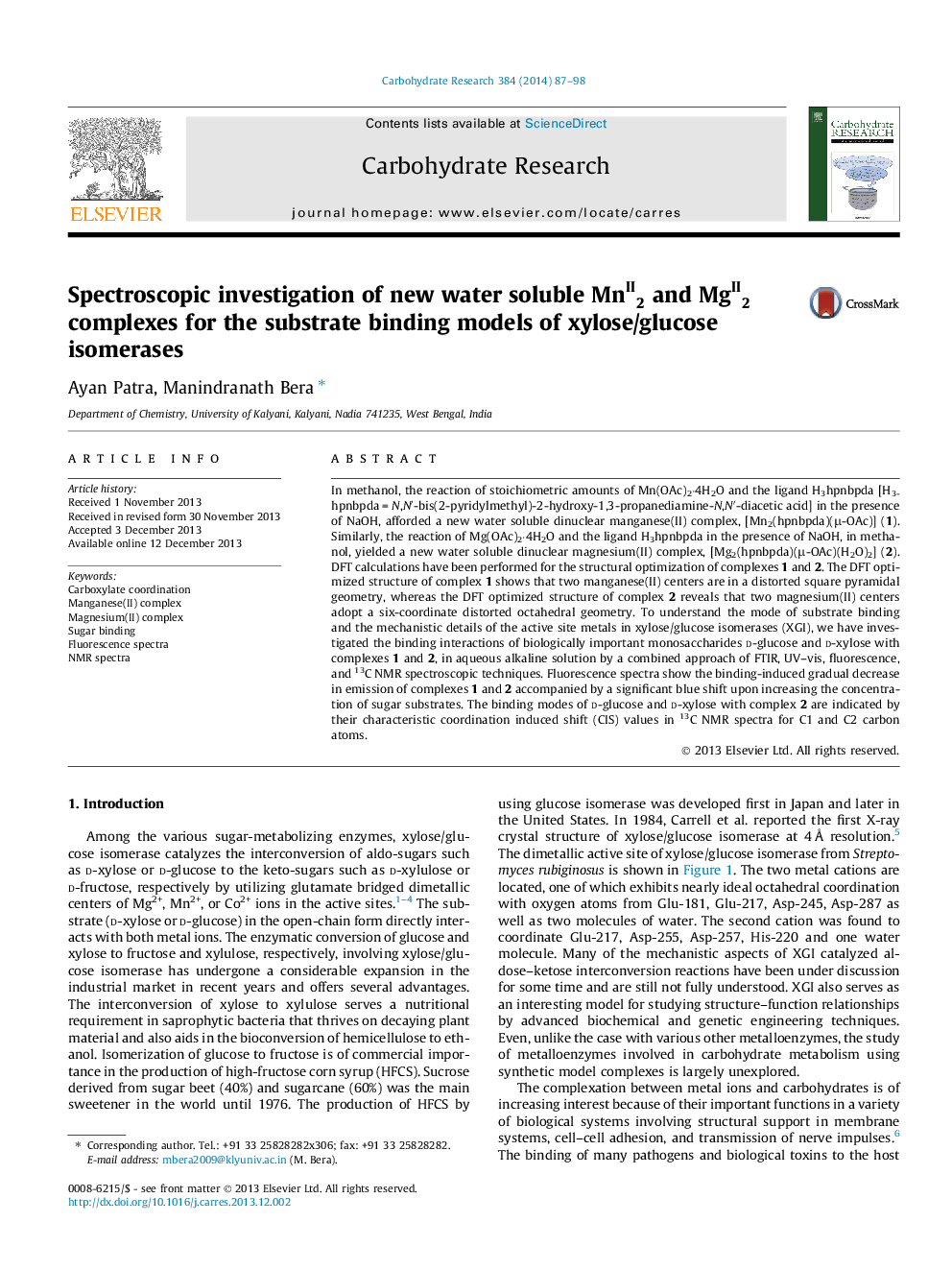| کد مقاله | کد نشریه | سال انتشار | مقاله انگلیسی | نسخه تمام متن |
|---|---|---|---|---|
| 1388628 | 1500867 | 2014 | 12 صفحه PDF | دانلود رایگان |

• New water soluble dinuclear MnII2 and MgII2 complexes have been synthesized.
• Substrate binding models for xylose/glucose isomerases have been investigated.
• Binding events have been studied by a combined approach of spectroscopic techniques.
• Spectroscopic results indicated 1:1 complex/substrate binding in solution.
In methanol, the reaction of stoichiometric amounts of Mn(OAc)2·4H2O and the ligand H3hpnbpda [H3hpnbpda = N,N′-bis(2-pyridylmethyl)-2-hydroxy-1,3-propanediamine-N,N′-diacetic acid] in the presence of NaOH, afforded a new water soluble dinuclear manganese(II) complex, [Mn2(hpnbpda)(μ-OAc)] (1). Similarly, the reaction of Mg(OAc)2·4H2O and the ligand H3hpnbpda in the presence of NaOH, in methanol, yielded a new water soluble dinuclear magnesium(II) complex, [Mg2(hpnbpda)(μ-OAc)(H2O)2] (2). DFT calculations have been performed for the structural optimization of complexes 1 and 2. The DFT optimized structure of complex 1 shows that two manganese(II) centers are in a distorted square pyramidal geometry, whereas the DFT optimized structure of complex 2 reveals that two magnesium(II) centers adopt a six-coordinate distorted octahedral geometry. To understand the mode of substrate binding and the mechanistic details of the active site metals in xylose/glucose isomerases (XGI), we have investigated the binding interactions of biologically important monosaccharides d-glucose and d-xylose with complexes 1 and 2, in aqueous alkaline solution by a combined approach of FTIR, UV–vis, fluorescence, and 13C NMR spectroscopic techniques. Fluorescence spectra show the binding-induced gradual decrease in emission of complexes 1 and 2 accompanied by a significant blue shift upon increasing the concentration of sugar substrates. The binding modes of d-glucose and d-xylose with complex 2 are indicated by their characteristic coordination induced shift (CIS) values in 13C NMR spectra for C1 and C2 carbon atoms.
Figure optionsDownload as PowerPoint slide
Journal: Carbohydrate Research - Volume 384, 30 January 2014, Pages 87–98